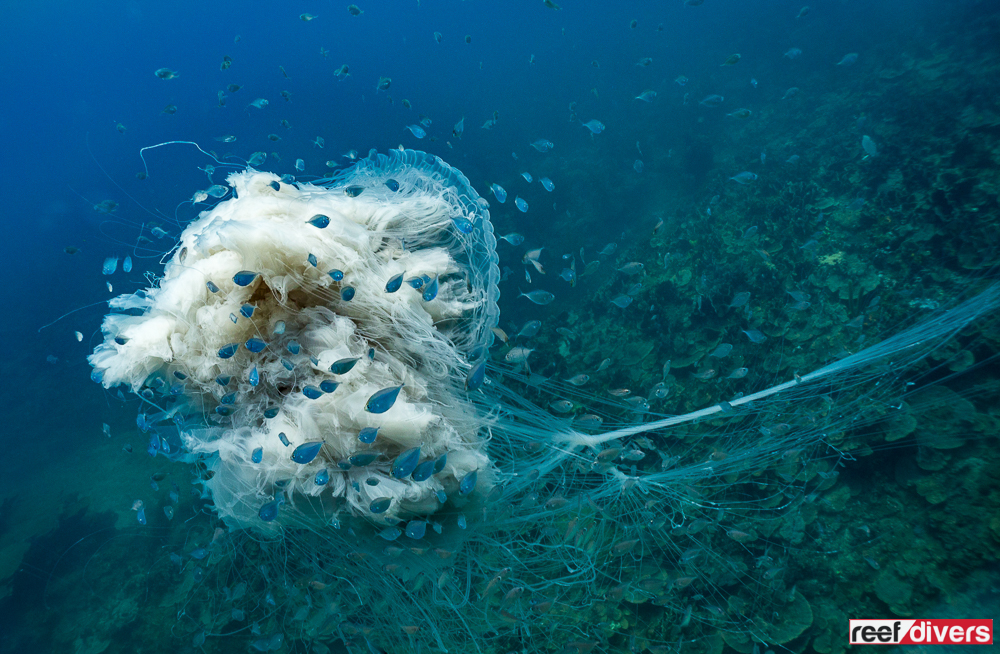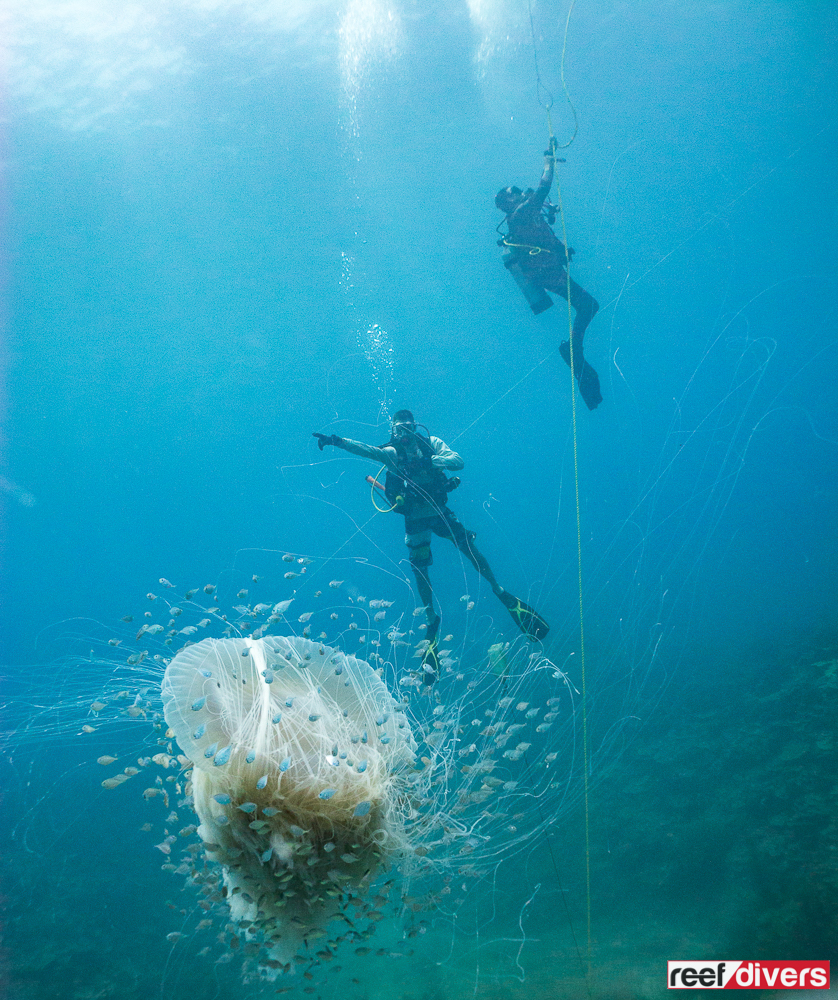The Pink Meanie
One of the reasons we love diving so much is you really never know what you will find underwater. And, just when you think you’ve seen it all, a 30-pound jellyfish is waiting to greet you before a dive.
Yesterday was an important day for me, we were heading out to install the new buoy at Nikki’s Reef. During our stay in Tela we were lucky to have this beautiful reef named in our honor, and what a way to christen the dive site, with a rare jellyfish encounter.
The Drymonema is no ordinary jellyfish, back in 2000 the Gulf of Mexico was inundated with a bloom of jellyfish nicknamed the “pink meanie”. Initially scientist thought the jellyfish was native to the Mediterranean, however in, 2010 the pink meanie was described as a new species, Drymonema larsoni.
Drymonema larsoni is named after scientist Ron Larson, who did some of the first work on the species in the Caribbean. More importantly, the pink meanie and its Mediterranean cousin represent a new family of jellyfish altogether, the first new family of jellies identified since 1921.
This discovery of the pink meanie was important to the growing body of evidence that scyphomedusae jellyfish are far more taxonomically rich that we know. Also we now know their biogeography is a more detailed, and the way they look is far more nuanced than traditionally thought.
“It’s rare that something like this could escape the notice of scientific research for so long. That it did is partially due to Drymonema’s extreme rarity almost everywhere in the world, except the northern Gulf of Mexico, where it bloomed in 2000. However, much of the project’s success can be tied to the use of molecular techniques, such as DNA sequencing, in addition to more traditional visual examination,” stated Dr. Bayha Dr. Keith Bayha from Dauphin Island Sea Lab.
(function(d, s, id) {
var js, fjs = d.getElementsByTagName(s)[0];
if (d.getElementById(id)) return;
js = d.createElement(s); js.id = id;
js.src = “//connect.facebook.net/en_US/sdk.js#xfbml=1&version=v2.6”;
fjs.parentNode.insertBefore(js, fjs);
}(document, ‘script’, ‘facebook-jssdk’));
In these video above you can see the Drymonema jelly is surrounded by Atlantic bumper, Chloroscombrus chrysurus. At times the fish were pulsing with the sound on my regulator spreading out in a cloud and quickly retreating beneath the protective stinging tentacles.
We spent a good twenty minutes observing the jellyfish making sure to stay clear of her stinging tentacles. The longest of which had to be more than 4 m (12 feet). We did get stung a little, nothing worse than a mosquito bite.
We spotted this jellyfish while diving with the Tela Honduras.


